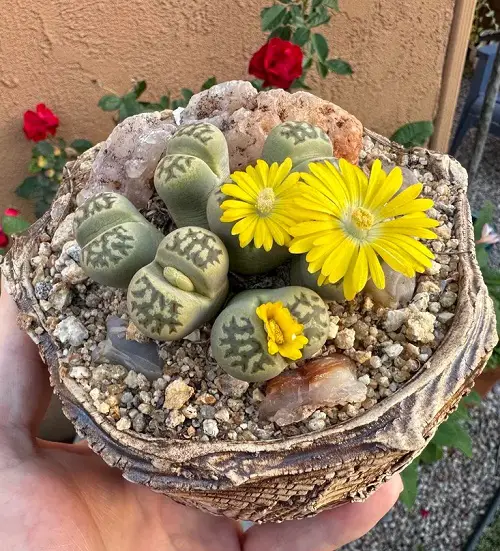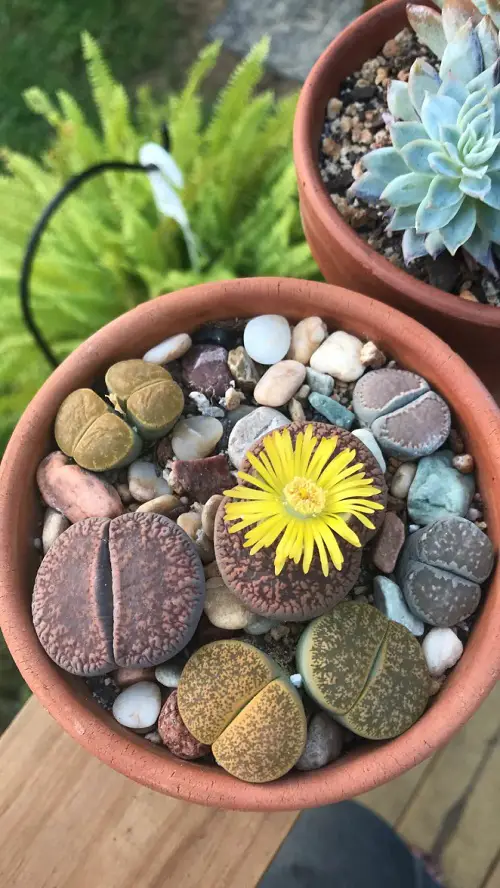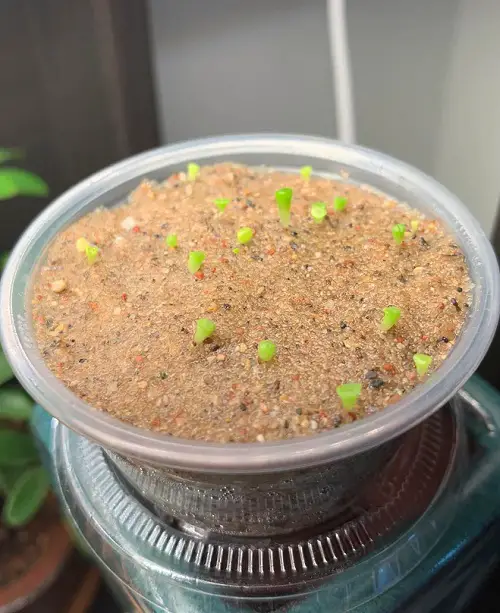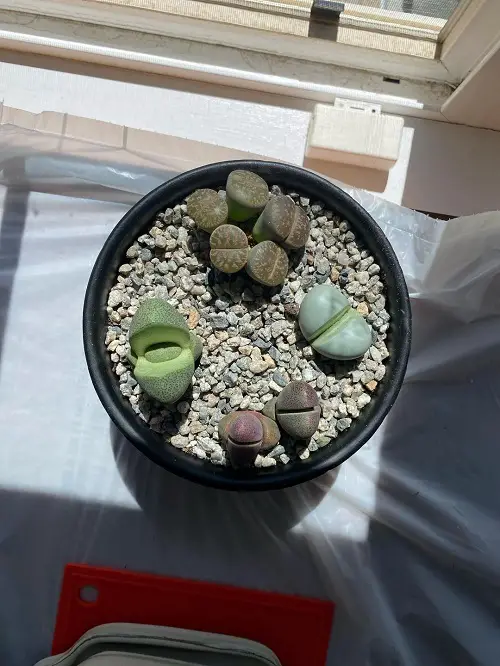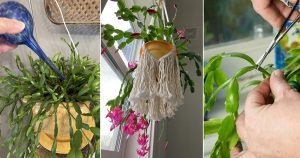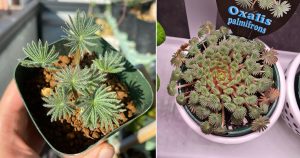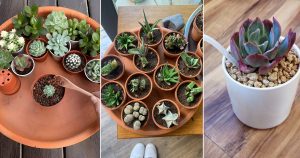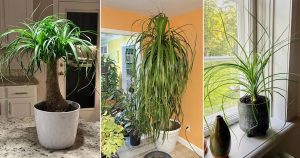If you are searching for an easy guide on how to grow and care for Living Stone Plants? Then, all your queries will be answered here!
Lithops are easy to care for and are lip-like succulents that everyone wants to have in their home! So, Read this article to know how to grow lithops with all the before and aftercare tips.
Living Stone Plants—Key Facts
| Common Name | Lithops plants, Living stones, Flowering stones, and more |
| Scientific Name | Lithops aucampiae, Lithops optica, Lithops pseudotruncatella, Lithops viridis, and other Lithops species |
| Nature | Perennial, Succulent |
| USDA Zones | 10-11 |
| Sunlight | 4-5 hours of direct sunlight |
| Watering | Irrigate sparingly during the growing season and avoid the dormancy phase. |
| Soil Type | Well-draining cactus or succulent mix, preferably sandy, gritty, or rocky soil |
| Propagation Time | Spring or early summer |
| Humidity Level | Low; prefers dry conditions |
| Fertilizer | Rarely needed |
| Danger of Pests | Generally low; potential pests include mealybugs, spider mites, snails, slugs, aphids and root-knot nematodes |
Note: It is not toxic to humans, pets, or wildlife, but ingestion should still be avoided.
Living Stone Plants Information
A lot of research in the science fields says that South Africa has a wide diversity of climates, landscapes, and soil types, so it is considered a hometown of many unique plants. Out of them, Living Stone is one.
Lithops are small, stone-like succulents that form camouflage. They are ground-hugging plants with pairs of leaves that gradually split to produce flowers. There are approximately 37 different species, and many other varieties grow in various parts of Botswana, Namibia, and South Africa.
However, knowing where they grow is comparatively easier than identifying the Lithops species, as they change their appearance a lot during the growing phase. Ordinary people often find it challenging, but scientists study them with their Chloroplast DNA, Nuclear DNA (nrITS), or AFLP (Amplified Fragment Length Polymorphism).
Furthermore, living stones can be grown in other parts of the world by mimicking their natural environment. Below, we will discuss how to care for lithops and their growing guide!
Living Stone Plants Pot Size
A living stone is a compact, slow-growing, long-lived succulent plant that grows only one inch above the soil but has a long root system. Therefore, it should be planted in a big clay pot that is at least 3-5 inches deep and has ample drainage holes.
This plant rarely needs repotting, and that too after 10 to 20 years of planting in its 40 to 50-year lifespan. However, if you see the plant roots outgrowing the pot, then you should repot it carefully in a bigger pot, keeping the roots safe.
Tip: The ideal time to do this is before the growing season.
Propagating Living Stone Plants
Division Method
As you know, living stones are clumping plants; they multiply over time, which means the parent plants produce offsets or pups at the bases, and similarly, the process continues. Once you find your pot filled with new plants, separate them manually from the pot using the division method. Do this in the spring, i.e., the growing season. For this:
- Prepare the pot/container by considering the above-mentioned size and material. Then, add a well-draining cactus soil mix.
- Carefully remove your living stones along with their roots. Do not damage the roots.
- With the help of scissors, separate them, making sure each plant has its roots attached.
- Plant the individual pair of living stones just above the soil line, keeping the soil slightly damp but not soggy.
- Now, wait for 1-4 weeks for the development of new roots.
Seeds
How to grow lithops from seeds? To collect seeds naturally from the plant, you must wait for the flowers to harvest the seed pods. Do this in the afternoon when the flowers remain open. Then, cut the seed pod with scissors.
- Dip the pot in water or add a few drops of water to the outer surfaces of the seed pods to make them open and take the seed from inside.
- Now, sow the seed into a fast-draining potting mix in spring or autumn at temperatures 65°-75°F. Do not cover them with soil, as it needs light for germination. Within seven days, maybe one month, or even a year, you will see seed sprouting. Keep it covered with a plastic bag until you see the signs of germination.
- You can water the plant by sprinkling a few droplets to keep the sand moist or placing the pot in a tray and allowing the sand to soak water from below once every two weeks.
- Once you see the plant growing well, take good care of it!
Note: If you are propagating seeds in a pot, then after germination, 12-18 months later, you can plant them in separate containers/pots.
Requirements for Growing Living Stone Plants
Sunlight
These plants prefer bright, indirect light. So, keep them in a place where they receive at least 4-5 hours of sunlight followed by afternoon shade. Too little light can cause them to lose their stone-like appearance. You can place them indoors in a south-facing window.
Watering
Living stone plants do not need much water because they store water in their thick, fleshy body. Ideally, watering should be done when the soil feels dry, and the leaves look a bit shriveled. During the growing season (spring/summer), water frequently every 2-3 weeks.
In the dormant phase, only water once a month, and the same for winter.
Soil
A well-draining succulent soil with sand or gravel to increase the drainage capacity would be suitable for your living stone plants.
Temperature and Humidity
These plants prefer cool nights and 65-80°F temperatures during the daytime. Plus, they do not like excess exposure to humid areas; moderate humidity is okay for them. Avoid keeping them in bathrooms.
Living Stone Plants Care
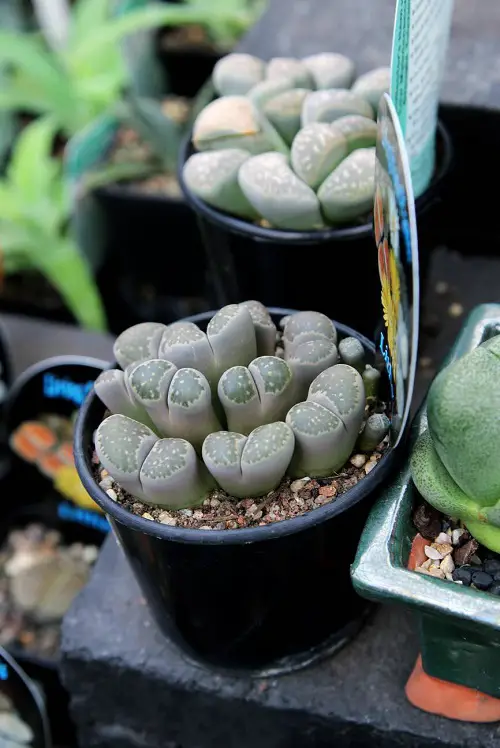
Fertilizer
Living stone plants do not need additional feed. If fertilizing, use a low-nitrogen fertilizer at the start of the growing season.
Pests and Diseases
Lithops care is not as tricky as people think; you only have to keep some points in mind, that’s all. Living stone plants are most likely affected by overwatering, poorly drained soil, or lack of air circulation. These conditions lead to root rot and invite fungus gnats, mealybugs, and other pests.
To cure overwatering, reduce the irrigation and let the plant’s soil dry out. For removing pests, make use of a cotton sponge dipped in alcohol to get rid of them.

